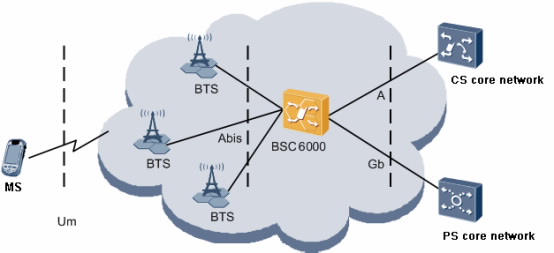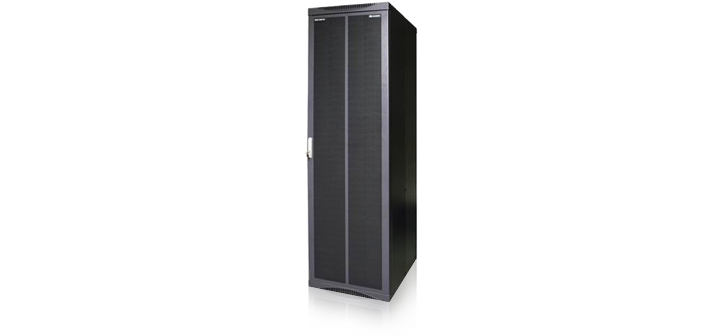High Network Reliability
The BSC6000 supports the following network reliability features:
- Duo-location BSC
- Single frequency double coverage
- BBU redundancy
- Single frequency TRX redundancy
With these reliability features, single pints of failure are avoided in the BSS, thus improving network reliability and ensuring continuity of network operations in the case of NE outage.
Duo-location BSC
The duo-location BSC feature enables two BSCs working in active/standby mode to connect to the MSC/SGSN and the BTS at the same time. In normal cases, the active BSC communicates with the MSC/SGSN and the BTS to provide services, and the standby BSC communicates with the MSC/SGSN and the BTS only to establish physical connections. When the active BSC is faulty, the standby BSC automatically takes over.
Single frequency double coverage
The single frequency double coverage feature enables two BTSs working in active/standby mode to cover the same area. In addition, only one of the BTSs is working at any specific time. The two BTSs use identical frequencies. In normal cases, the active BTS works properly, whereas the standby BTS works but does not transmit power. When the active BTS is faulty, the BSC triggers the switchover between the active BTS and the standby BTS. Specifically, the active BTS is downgraded to standby, whereas the standby BTS is upgraded to active. This reliability feature ensures a fully backed-up radio coverage while using only the frequencies necessary for a single layer coverage.
BBU redundancy
The BBU redundancy feature enables an RRU to establish physical connections with two BBUs working in active/standby mode at the same time. In normal cases, an RRU communicates with only the active BBU, and also supports the switchover between CPRI ports. When the active BBU is faulty, the BSC triggers the switchover between the active BBU and the standby BBU during which the CPRI ports are also switched over. In this manner, the RRU communicates with the standby BBU.
Single frequency TRX redundancy
The single frequency TRX redundancy feature enables a BTS to be configured with a standby TRX that shares the same frequencies with an active TRX. When the active TRX is faulty, the standby TRX is automatically activated to take over as the active TRX, thus improving network availability and ensuring continued network even in the case of a TRX failure.
High Integration and Low Cost
The BSC6000 features large capacity and high integration. A single BSC6000 cabinet supports a maximum of 2048 TRXs, which meets the requirements for the GSM-R network along tracks. In addition, the BSC6000 takes a small space and reduces power consumption.
Easy Configuration and Convenient Maintenance
The BSC6000 has a small number of board types. In addition to transmission boards, the BSC6000 cabinet houses network switching boards, signaling processing boards, and service processing boards. Simplifying board types reduces the maintenance cost. The interface boards and service boards, not bound together, are flexible in configuration and easy to maintain and expand.
The BSC6000 supports the star, chain, tree, and ring topologies. Figure 1-2 shows the role of the BSC6000 in the GSM-R network.

Role of the BSC6000 in the network
The interfaces between the BSC6000 and each network element (NE) in the GSM-R network are as follows:
- Um: interface between the BTS and the MS
- Abis: interface between the BSC6000 and the BTS
- A: interface between the BSC6000 and the Mobile Switching Center (MSC) or Media Gateway (MGW)
- Gb: interface between the BSC6000 and the Serving GPRS Support Node (SGSN)
The A, Um, and Gb interfaces are standardized interfaces, through which equipment from different vendors can be interconnected.
In a GSM-R network, the BSC6000 is responsible for the following functions:
- Radio resource management
- Base station management
- Power control
Handover management


